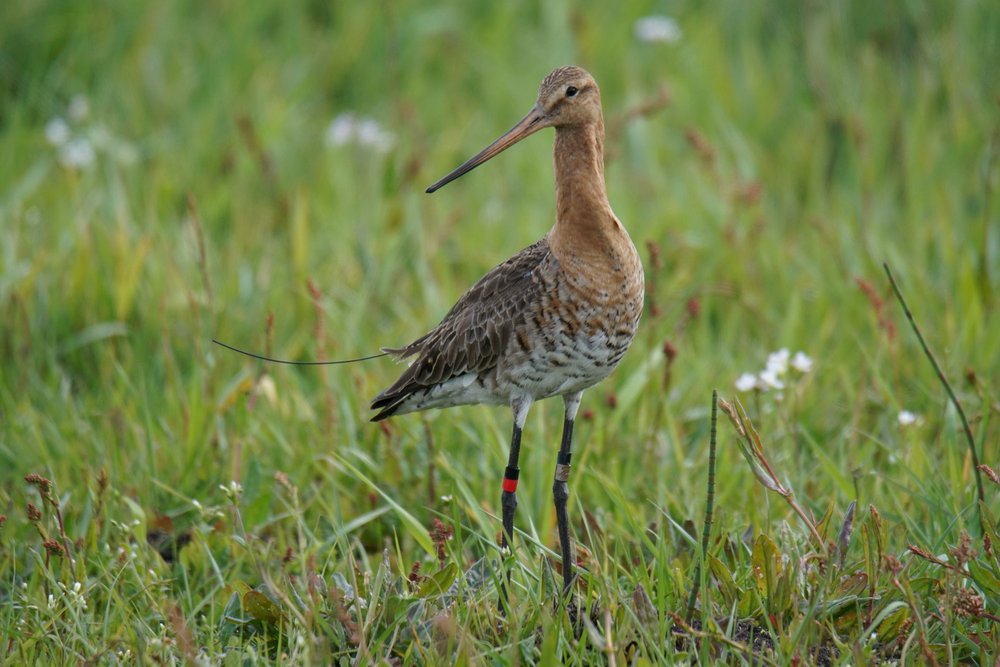The project
Transmitter birds
Birds with backpacks
In 2018, we started satellite-tagging Black-tailed Godwits in the scope of the precursor project LIFE Meadow Birds. The goal was (and still is) to find the exact migratory routes that the birds use, and to use that information to determine which dangers they might face along the way.
The first transmitters that we used were light and durable, but had no GPS accuracy. Now, with the ongoing technological progress, we are able to use lightweight GPS transmitters with lots of different sensors to gain detailed movement and behavioural data from the Godwits. In six years of challenging field work, we have tagged more than 380 adult and juvenile birds in total, and have now collected more than 256,000 locations.
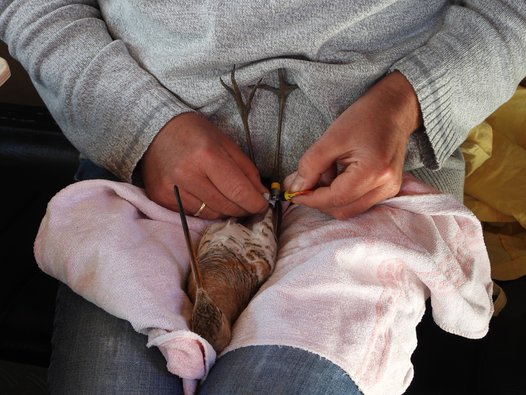
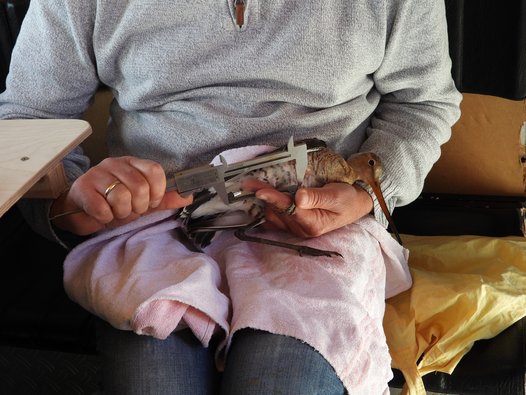
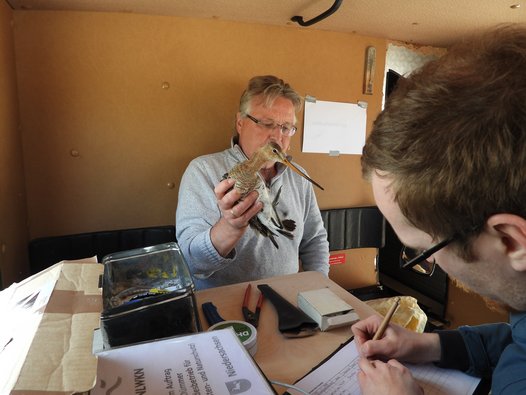
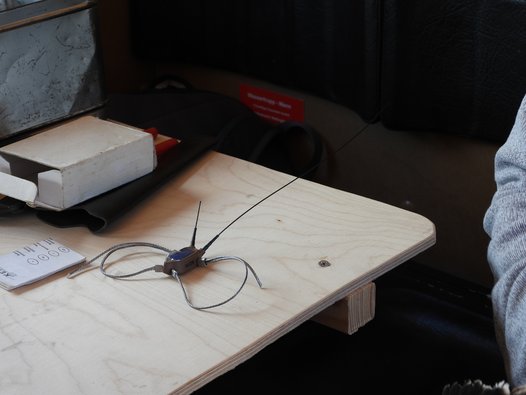
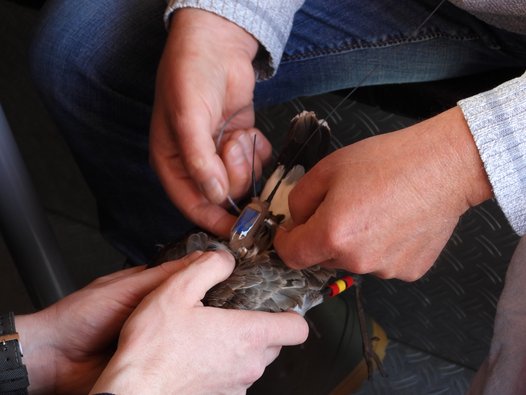
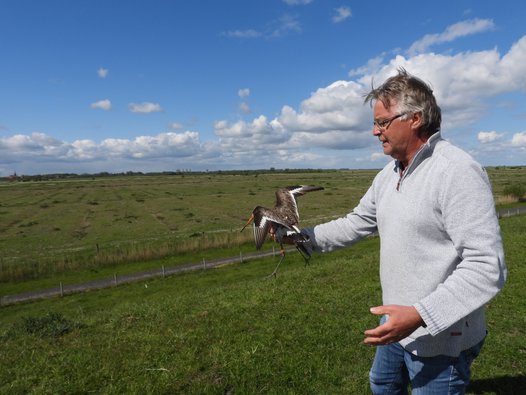
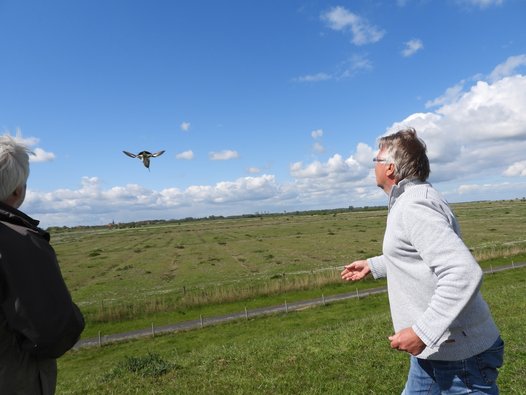
Follow our birds
If you want to follow our birds on their journey, you can track their locations here:
By default, you will see the data from the last week. If you want to change the period, use the “Open right drawer” button at the top right. From there, you can also select individual birds.
How it's done
The field season starts with the arrival of the adult Godwits by the end of March or the beginning of April. After they arrive, the Godwits occupy territories on the flat-flooded meadows at the project areas V39 Dümmer and V18 Unterelbe.
When they are breeding, we monitor their clutches closely and wait for the right moment to catch the birds. After we have caught an adult bird, we measure it and put colour rings on it. Then, the bird gets a very light GPS tag (“backpack”) with leg loops that are tailored to its body size. Juvenile Godwits will be tagged right before they can fly. Otherwise we would not be able to catch them anymore.
With the movement data and the observed causes of death, we want to improve conservation measures for Black-tailed Godwits and other meadow birds along the entire East Atlantic Flyway.
Experiences from the 2023 field season
"Our adult Godwits leave their breeding grounds in mid-June and arrive around mid-July in West Africa. On their way south, the Godwits use a wide network of stopover sites along the East Atlantic Flyway. Important stopover sites lie in the Netherlands, around the Bay of Biscay and the Gulf of Lion in France, along the Balearic coast and the Gulf of Cádiz in Spain, and around the Tagus delta in Portugal.
The birds stay in West Africa until the end of January. Then, they leave their wintering grounds in Senegal, Mauretania, Mali, Gambia and Guinea-Bissau to head north. On their way back, the birds mostly use the same stopover sites as on their way south. There is just a short period of time in which the birds arrive at their breeding grounds: from the end of March till the beginning of April.
We had a few losses among the transmitter birds in six years of tagging. With colleagues along the flyway, we try to recover the tags and examine why the tags were lost or why the birds died. We already had two losses due to a Peregrine Falcon, one due to a power line, as well as some unknown causes."
